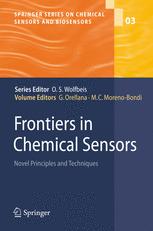

Most ebook files are in PDF format, so you can easily read them using various software such as Foxit Reader or directly on the Google Chrome browser.
Some ebook files are released by publishers in other formats such as .awz, .mobi, .epub, .fb2, etc. You may need to install specific software to read these formats on mobile/PC, such as Calibre.
Please read the tutorial at this link: https://ebookbell.com/faq
We offer FREE conversion to the popular formats you request; however, this may take some time. Therefore, right after payment, please email us, and we will try to provide the service as quickly as possible.
For some exceptional file formats or broken links (if any), please refrain from opening any disputes. Instead, email us first, and we will try to assist within a maximum of 6 hours.
EbookBell Team

5.0
30 reviewsWith their similarity to the organs of the most advanced creatures that inhabit the Earth, sensors are regarded as being the “senses of electronics”: arti?cial eyes and ears that are capable of seeing and hearing beyond the range of - man perception; electronic noses and tongues that can recognise odours and ?avours without a lifetime training; touch that is able not only to feel the texture and temperature of the materials but even to discern their chemical compo- tion. Among the world of chemical sensors, optical devices (sometimes termed “optodes”, from the Greek “the optical way”) have reached a prominent place in those areas where the features of light and of the light-matter interaction show their advantage: contactless or long-distance interrogation, detection sensitivity, analyte selectivity, absence of electrical interference or risks, and lack of analyte consumption, to name just a few. The introduction of optical ?bres and integrated optics has added more value to such sensing since now light can be con?ned and readily carried to dif?cult-to-reach locations, higher information density can be transported, indicator dyes can be immobilised at the distal end or the evanescent ?eld for unique chemical and biochemical sensing (including multiplexed and distributed measurements), optical s- sors can now be subject to mass production and novel sensing schemes have been established (interferometric, surface plasmon resonance, ?uorescence energy transfer, supramolecular recognition . . . ).